The Gulf of Morbihan is the inland sea in South-Brittany. Its size is about 8 by 4 nautical miles and there are a total of around 60 islands and islets. The tidal current is running between the islands at a speed of several knots. We’ve sometimes seen the advertisements about the holiday resorts of Morbihan in Paris underground and thus our expectations were high.
Two of the biggest islands are Île-aux-Moines and Île-d’Arz, both being very popular outing destinations. Just our pilot book listed 19 most popular anchorages. In addition we got countless anchorage recommendations, called mouillage in French, from local sailors along the coast of Brittany. We have tough job of deciding on where to go and what places would be our liking.
The entrance to the Gulf of Morbihan is a strait which is only a quarter of a mile wide. The tidal current is very strong; 6 to 9 knots, thus it’s recommended to pass the entrance only during a slack water or with forward current.
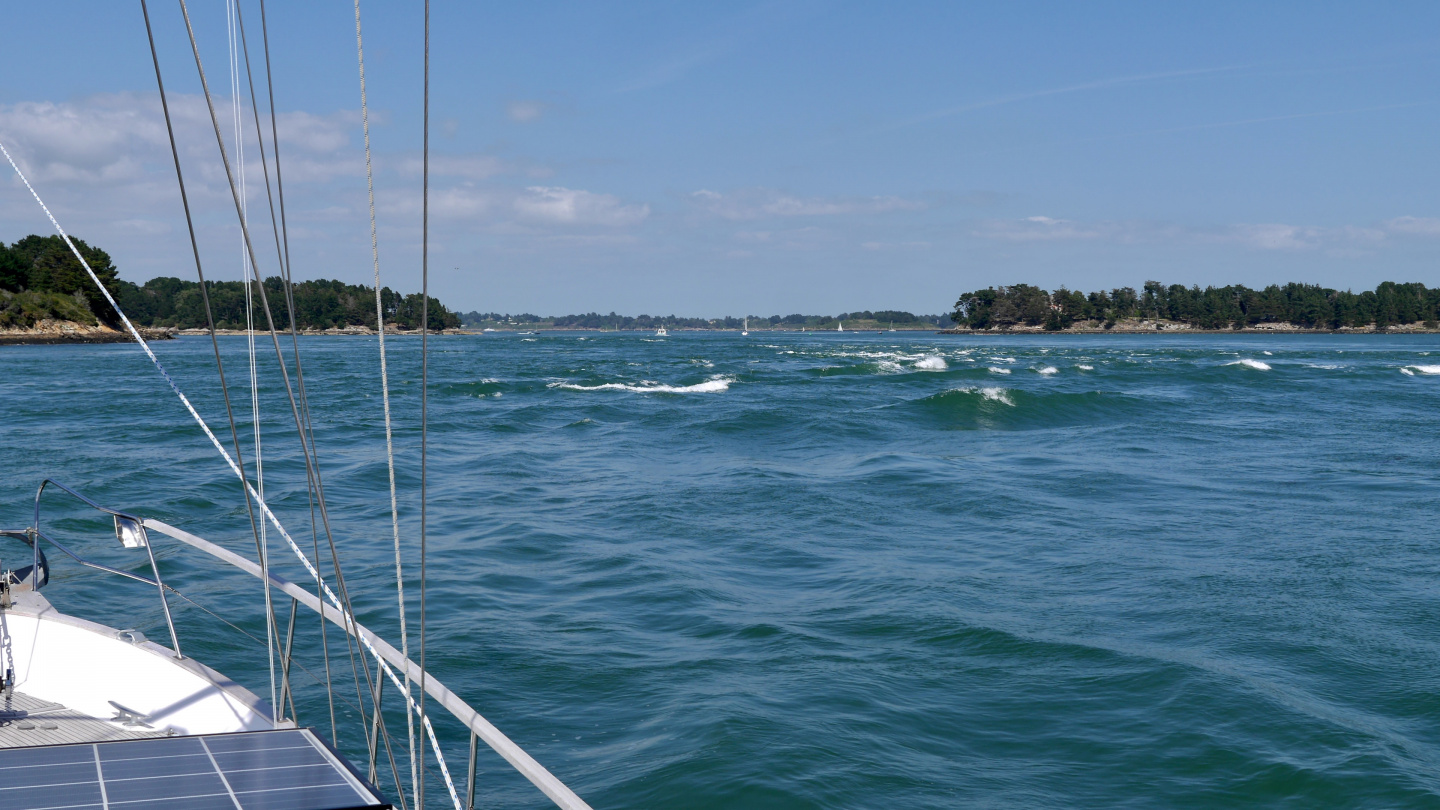
On Sunday evening we departed from the harbour of Le Palais towards Morbihan and stopped for one night at Port du Crouesty for resupplying Suwena with the intent of anchoring for several days. Crouesty was surprisingly large marina; there are a total of 1400 berths in 6 different basins. Marina service also included a tender ride to the pontoon of the nearby supermarket. Just bring your handheld VHF and you can order a return ride as well. This was really well organized and so convenient.
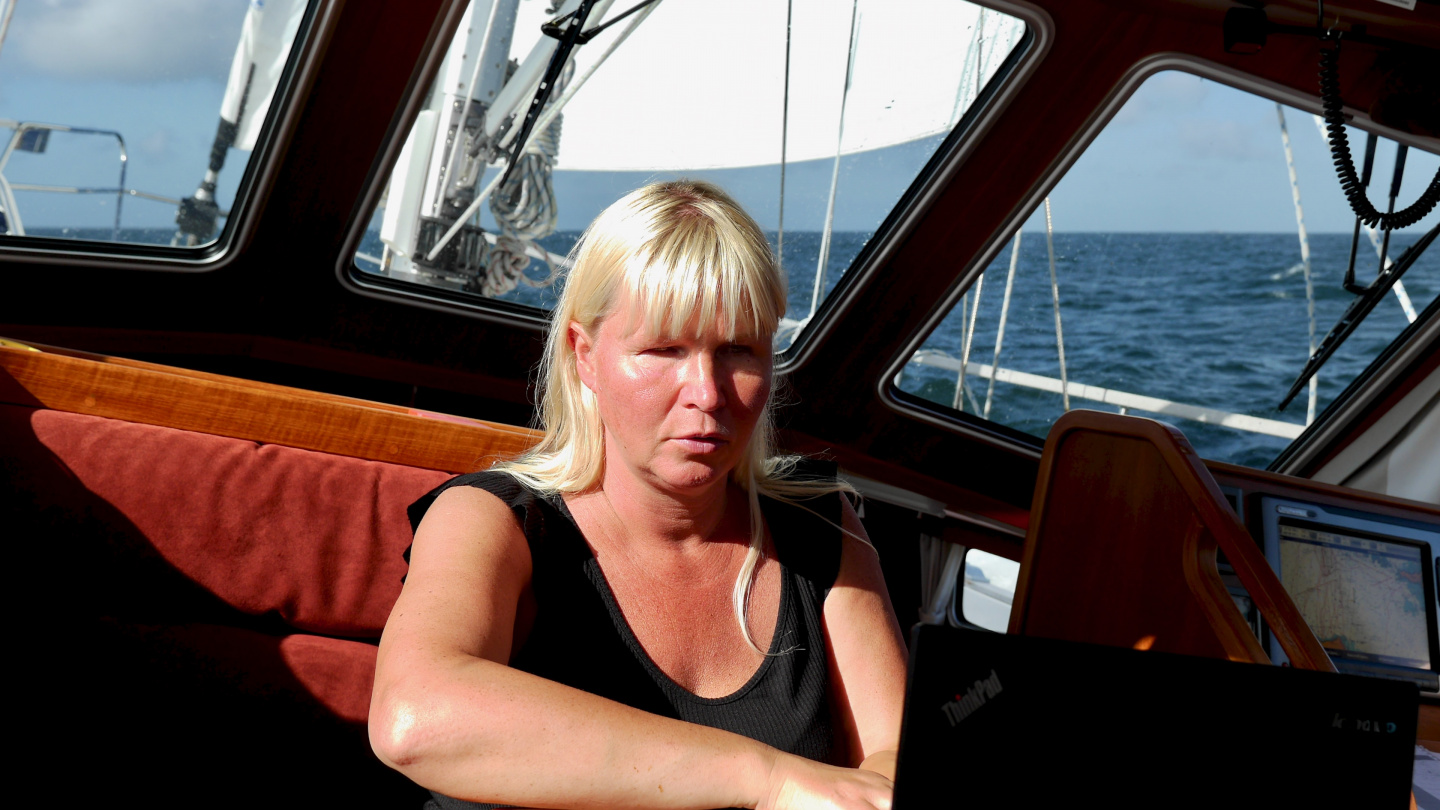
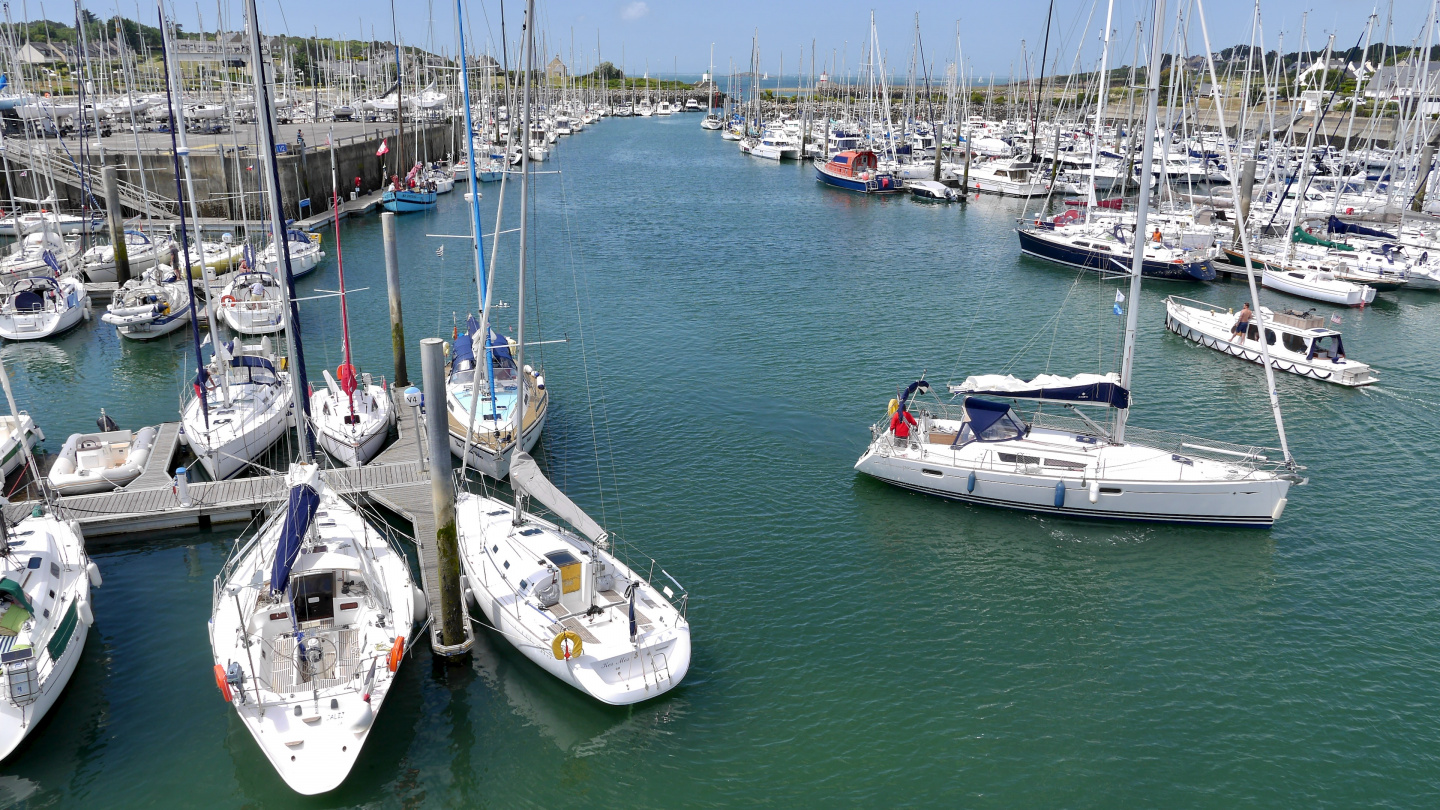
this summer S/Y Xenja was the second Finnish boat we met in Crouesty. It looks like we have a habit of meeting when we are about to untie our lines and so it happened again. Anyhow it was very nice to change some quick tips about sailing in South-Brittany with Päivi and Markus.
The weather forecast for next days was funny. The wind should rise around noon and shift 90 to 180 degrees in the wee hours next morning. For example, many have recommended to us the anchorage on the west coast of the island of Moines. However it would be unsheltered before the wind shifted. Othe other hand if we went to the east coast we would have a restless night. Our Suwena is a big girl and the scale on a crane showed 24 tons during the last haul-out. We were driving criss-cross around the Morbihan and were looking for suitable anchorage. To our disappointment all well sheltered bays were filled with mooring buoys which looked way too small for her. But if we anchored in the outer edge of the bays then the shelter offered by the island would not be very good. In addition the strong current surely turns us abeam to the wind and then even a small waves make being onboard uncomfortable.
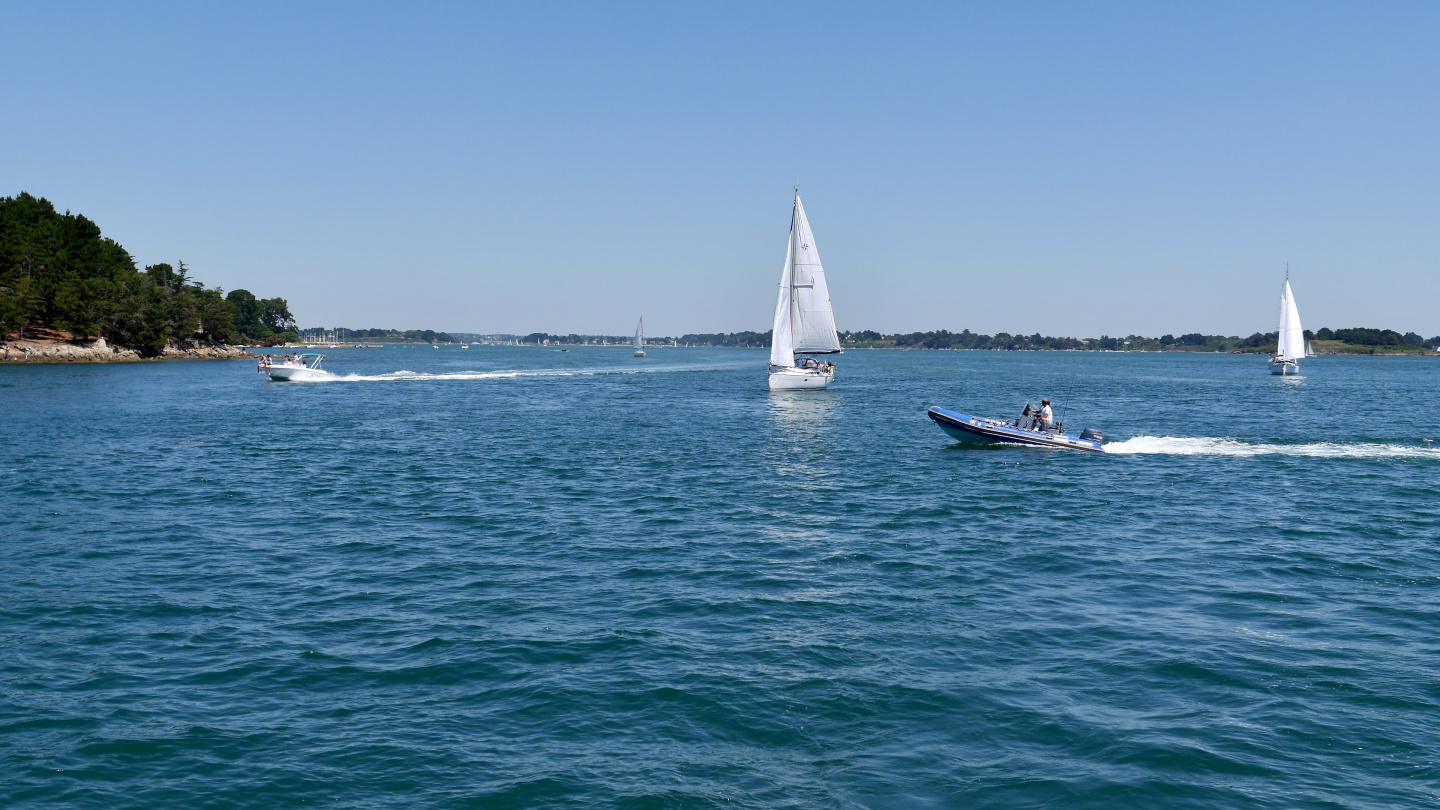
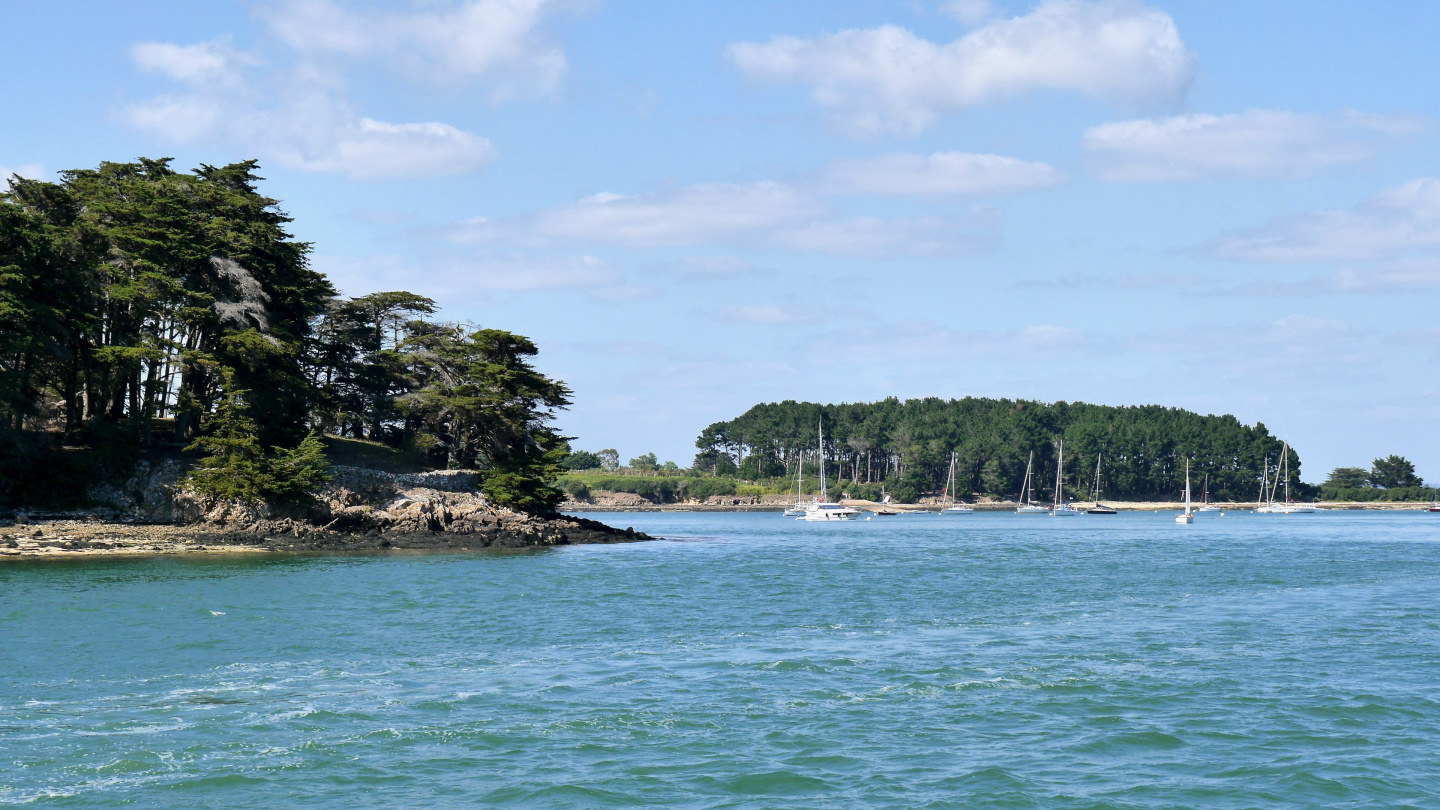
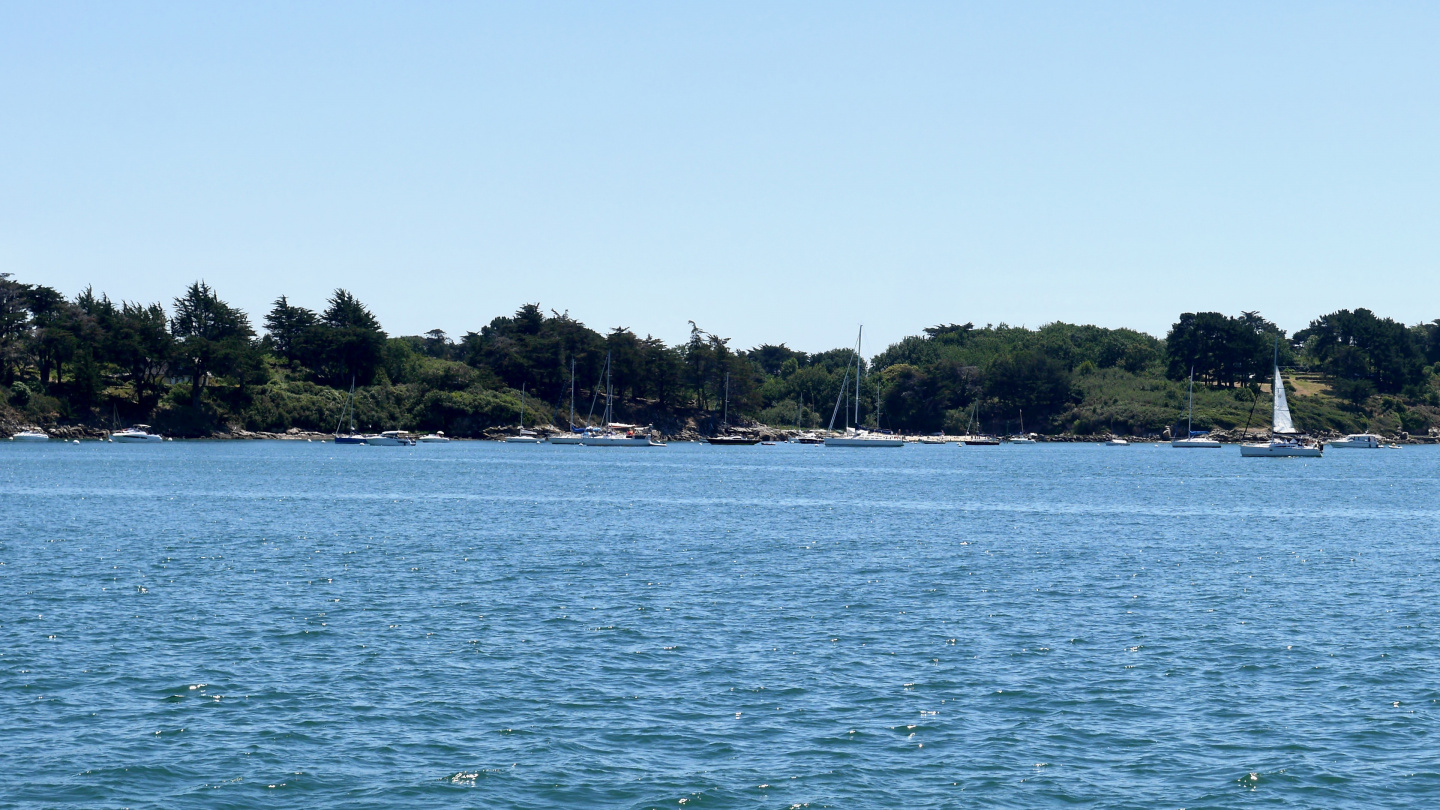
We continued searching of the anchorage and drove deeper into the Gulf of Morbihan. On the southern side of the island of Arz we found a bay with already several masts visible. We joined them and dropped the hook.
When we were relaxing on Suwena and following the sailing school dinghies sailing around us and a multitude of motorboats whizzing from one island to another the feeling was similar to the big lakes in Finland. We were sailing with the previous Suwena on lake Saimaa in 2010 and definitely the motorboats, sailing dinghies or even kayaks are the best watercrafts there. They can reach all the shallow coasts or made fast to the buoys near shore while the islands provide shelter from the wind.
There are a lot to see on the islands of Artz and Moines. We however were just relaxing onboard Suwena in the tranquillity before continuing to Vannes.

